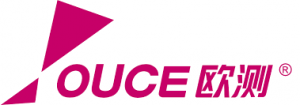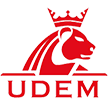Follow on Public Offer FPO Types & Why does a Company Need an FPO?
All of our content is based on objective analysis, and the opinions are our own. Capital raised from an FPO can also be used to expand the business into new markets or diversify its product portfolio. FPO is for investors who do not have the time and are not adept with complex financial knowledge to analyse IPOs. This mechanism is common in the context of corporate finance, where strategies for capital accumulation and growth expansion are vital for a firm’s sustainability and success.
You have an idea about the company, its management, business practices, efficiency, etc. Julia Kagan is a financial/consumer journalist and former senior editor, personal finance, of Investopedia. A FREE assessment that tells you what kind of investor you are, your risk tolerance levels, and a lot more. Now that we know about two major types of FPOs, we can explore exactly when a company brings its FPO. Recently, the board of Adani Enterprises has approved the FPO of Rs. 20,000 crores which is pending shareholderholder’s vote.
Follow-on public offering: Easy Video Explanation
- One recent example of an FPO occurred in April 2021 when the company Upstart Holdings, Inc. filed a registration statement with the Securities and Exchange Commission.
- Please note that past performance of financial products and instruments does not necessarily indicate the prospects and performance thereof.
- Non-diluted follow-on offerings are also called secondary market offerings.
- In a competitive offering, multiple underwriting firms compete to offer the best terms to the company.
However, the amount of earnings available for shareholders remains the same. Such an offering is known as a dilutive FPO, leading to a dilution of the EPS. A follow-on public offer is a way for a company that’s already public to raise additional capital by issuing new shares to the public. An initial public offering (IPO) bases its price on the health and performance of the company, and the price the company hopes to achieve per share during the initial offering.
Priority may be given to certain categories of investors, such as institutional investors. In the book-building process, bids are collected from investors at various prices within the price band. The issuing company is the organization that decides to raise capital through the FPO.
The future of FPOs is likely to be influenced by potential changes in the regulatory environment and the impact of technology. Advances in technology, such as blockchain and AI, may streamline the FPO process and improve efficiency. Furthermore, regulatory changes may enhance transparency and investor protection. Additionally, new trends and innovations may emerge, such as alternative pricing methods and the growth of FPOs in certain sectors.
The articles and research support materials available on this site are educational and are not intended to be investment or tax advice. All such information is provided solely for convenience purposes only and all users thereof should be guided accordingly. This could include things like the use of alternative pricing methods, the growth of FPOs in certain sectors, or the rise of international FPOs. Any non-compliance can result in penalties and damage to the company’s reputation. However later in February 2020, ITI withdrew its FPO citing prevailing market conditions.
Get in Touch With a Financial Advisor
In the case of the IPO, companies go through extensive market research to nail down the right price. In the case of an FPO, the new shares are often discounted compared to the current share price to entice buyers. An FPO is a type of secondary offering, which is any time shares are sold after the primary offer (or IPO). While an FPO is a secondary offering, each secondary offering is not an FPO. Major tech companies such as Meta (formerly Facebook), Google, and Tesla have issued follow-on offers over the past several decades to raise capital during their growth years. Follow-on financing is when a startup that has already raised capital raises additional capital through another round of funding.
Would you prefer to work with a financial professional remotely or in-person?
Follow-on offerings directly impact shareholders as they can dilute existing shares, potentially affecting the share price. Existing shareholders may also participate in the FPO; either by purchasing additional shares or selling some of their existing ones. FPOs are a way for companies to tap into the capital markets and raise additional funds without taking on debt. It’s when a company that’s already listed on the stock market issues more shares to raise additional funds from the public. Numerous companies in India have come up with an FPO where they issued new shares to raise additional capital. Ruchi Soya wanted to raise additional capital and launched its FPO on March 24th 2022, which was open for subscription to investors till 28th March 2022.
Do you already work with a financial advisor?
ATM offerings are also typically sold for less than traditional follow-on offerings, and they require minimal management involvement. The above table shows us that after a diluted FPO, the ownership percentage of each share decreases from 1% to 0.9%. However, in the case of Non-Diluted FPO, the ownership percentage of each share remains the same.
Before investing in securities, consider your investment objective, level of experience and risk appetite carefully. Kindly note that, this article does not constitute an offer or solicitation for the purchase or sale of any financial instrument. Although business owners can raise initial funds through an Initial Public Offering (IPO), what happens when the company needs additional funds? This is where a Follow-On Public Offer (FPO) helps business owners to ensure they have adequate funds to keep their business activities running smoothly. Another difference is how companies price their shares during the IPO versus the FPO.
Follow-on offerings provide publicly traded companies a crucial avenue to raise additional funds post-IPO, catering to various what is follow on public offer needs like growth, debt reduction, and project funding. A company may need more money to fund big projects or expand its business. To raise this money, it can offer more shares to the public through a Follow-on Public Offer (FPO). In a dilutive FPO, new shares are created and sold, which increases the total number of shares in the market. However, because more shares are now available, the value of each existing share might decrease slightly.
Once the price is set, the company, along with the investment bankers, conducts a roadshow to market the FPO to potential investors. This involves presentations to institutional investors, analysts, and brokers to generate interest in the FPO. While an IPO refers to the process of a company going public for the first time, an FPO is carried out by companies already listed on a stock exchange. Another question that may cross your mind is why go for a follow on public offer if the shares of the company are already listed? The only reason why any investor would go for FPOs over listed shares is because of the price advantage. ITI had put a fresh issue of 18 crore shares on offer within a price band of Rs 71 to 77 per share.














